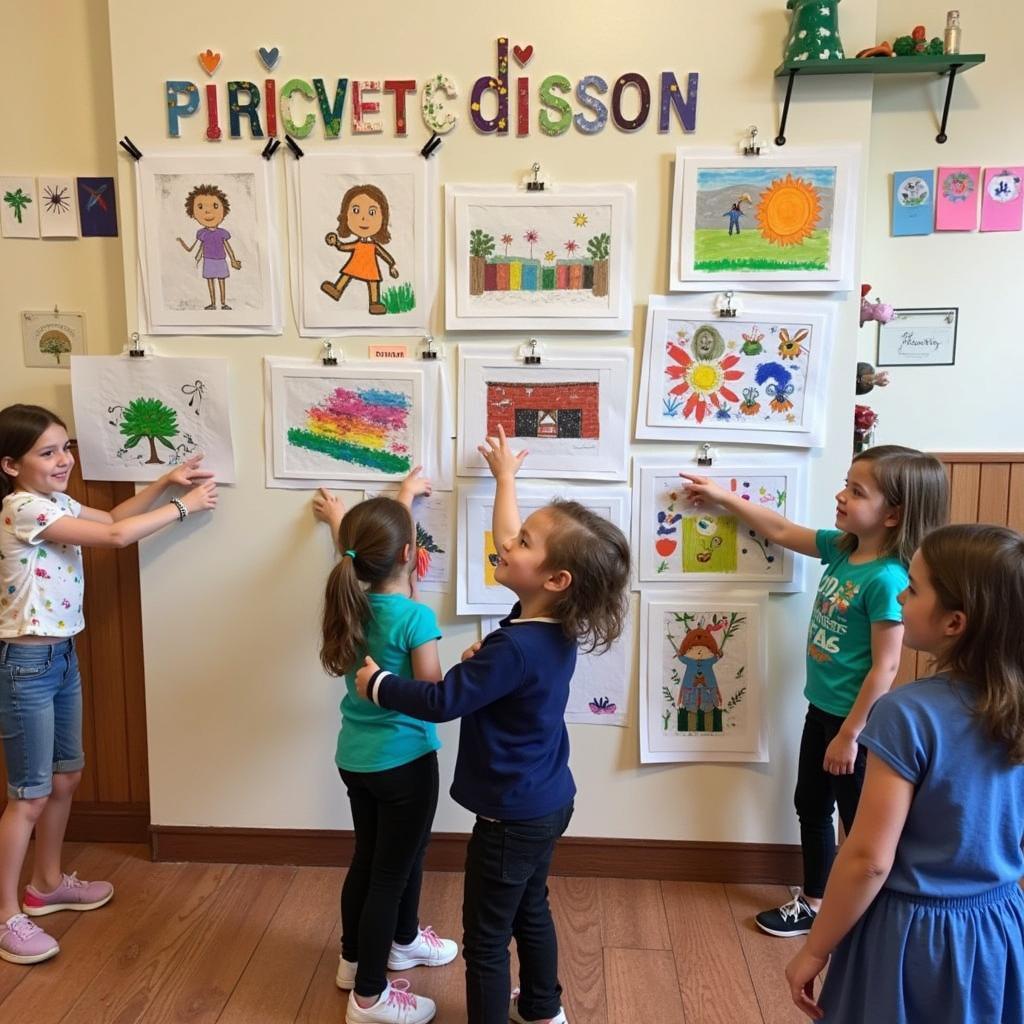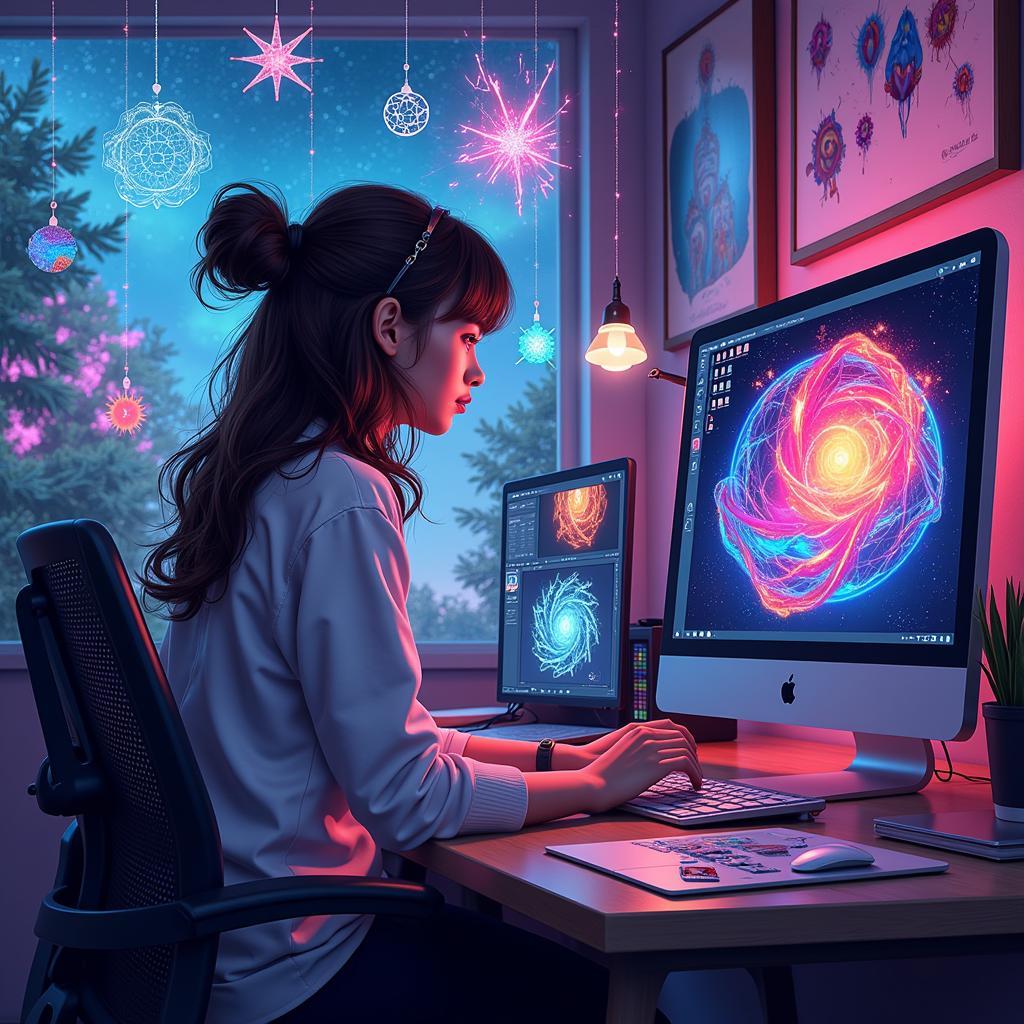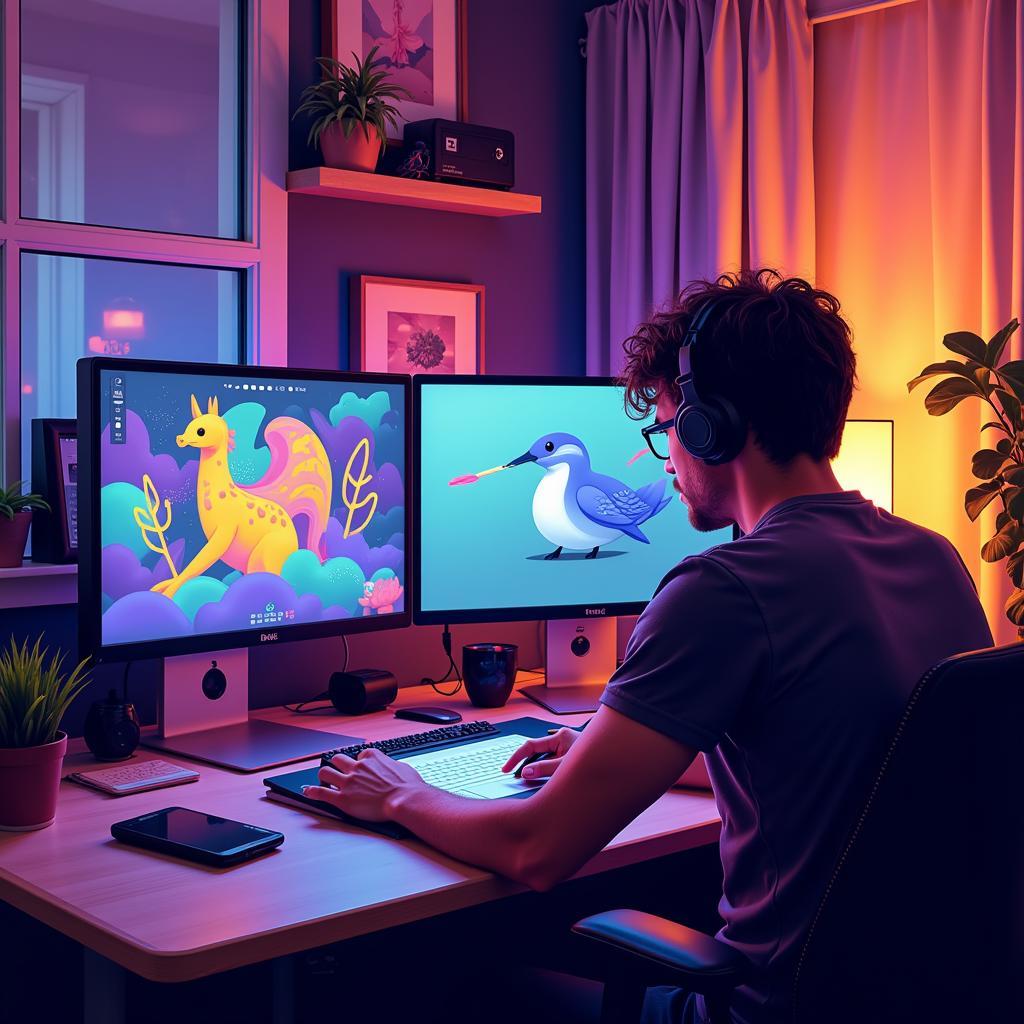Unleashing Creativity: Your Guide to the Preschool Art Center
A Preschool Art Center is more than just a place for kids to paint and draw; it’s a vibrant hub where young imaginations take flight. It’s where messy hands and colorful masterpieces converge to create a world of wonder, fostering essential developmental skills in a fun and engaging way. Let’s explore the essential elements of a thriving preschool art center and discover how it cultivates creativity, cognitive growth, and self-expression in young children.
Why a Preschool Art Center Matters
Art is not just about the finished product; it’s about the process of discovery, experimentation, and self-expression. In a preschool art center, children are encouraged to explore various art forms, from painting and drawing to sculpting and collage. This exploration allows them to develop fine motor skills, problem-solving abilities, and a sense of accomplishment. It also fosters creativity, boosts self-esteem, and provides a safe space for emotional expression. A well-designed art center in preschool can be a cornerstone of early childhood development.
Creating an Engaging Art Space for Preschoolers
A successful preschool art center should be a stimulating and inviting environment that encourages children to explore and create. Here are some key elements to consider:
- Accessibility: Materials should be easily accessible to children, arranged in a way that encourages independence and self-selection.
- Variety: Offer a wide range of materials, including paints, crayons, markers, clay, paper, fabric scraps, natural objects, and recycled materials. This variety caters to different interests and learning styles.
- Organization: Designated areas for different activities help maintain order and minimize distractions. Clearly labeled containers and shelves make it easier for children to find and put away materials.
- Display: Showcase children’s artwork to celebrate their creativity and build their confidence. A dedicated display area can inspire further artistic exploration.
After a delightful session crafting a beanstalk with recycled materials, the children proudly displayed their creations, showcasing their resourcefulness and artistic flair.
Integrating Art into the Preschool Curriculum
Art can be seamlessly integrated into various preschool curriculum areas, enriching learning experiences and making learning more engaging.
Connecting Art with Literacy
Storytelling and art go hand in hand. After reading a book like Jack and the Beanstalk art activities, children can create illustrations or sculptures based on the story, enhancing their comprehension and sparking their imagination. They might even create their own books, combining words and pictures to tell their unique stories.
Exploring Math Concepts through Art
Art can be a fun and engaging way to introduce mathematical concepts to preschoolers. Activities like pattern making, sorting objects by color or shape, and measuring materials for art projects help children develop early math skills in a hands-on, interactive way.
Exploring Science through Art
Science and art can intersect in exciting ways in the preschool art center. Children can explore color mixing, observe the textures of different materials, and experiment with natural elements like leaves and flowers in their art projects, fostering scientific curiosity and observation skills.
Creating a vibrant wall mounted sand art piece allows children to explore textures and patterns while expressing their creativity.
The Benefits of a Dedicated Preschool Art Center
“A dedicated preschool art center offers a safe and stimulating environment where children can explore their creativity, develop essential skills, and express themselves freely,” says Dr. Emily Carter, Early Childhood Education Specialist.
Developing Fine Motor Skills
Activities like painting, drawing, and sculpting help children refine their fine motor skills, strengthening the small muscles in their hands and fingers, which are crucial for writing, buttoning clothes, and other everyday tasks.
Enhancing Cognitive Development
Art encourages problem-solving, critical thinking, and decision-making. Children learn to plan, experiment, and evaluate their work, developing important cognitive skills that extend beyond the art center.
Boosting Self-Esteem and Confidence
The act of creating something beautiful and unique can be incredibly empowering for young children. Displaying their artwork in the preschool art center builds their self-esteem and instills a sense of pride in their accomplishments.
“The joy on a child’s face when they complete an art project is truly priceless. It’s a testament to the power of art to nurture creativity and build confidence,” adds Dr. Carter.
Looking for inspiring kids art classes honolulu? Exploring various art forms can enrich a child’s creative journey.
 Preschoolers proudly displaying their artwork in the art center
Preschoolers proudly displaying their artwork in the art center
Conclusion
A preschool art center is an invaluable asset to any early childhood education program. It’s a space where young imaginations flourish, skills are honed, and self-expression is celebrated. By fostering a love for art in early childhood, we equip children with valuable tools for lifelong learning and creative exploration. So, invest in a thriving preschool art center and watch your students’ creativity blossom. Remember, the preschool art center is not just about making art; it’s about making a difference in the lives of young learners.
FAQ
- What materials should be included in a preschool art center?
- How can art be integrated into other curriculum areas?
- What are the benefits of a dedicated art space for preschoolers?
- How can I encourage creativity in my preschool art center?
- What are some simple art activities for preschoolers?
- How can I make my art center safe for young children?
- How can I involve parents in the art center activities?
Need support? Contact us at Phone Number: 02462573573, Email: [email protected] Or visit us at Savico Megamall, 7-9 Đ. Nguyễn Văn Linh, Gia Thụy, Long Biên, Hà Nội 10000, Việt Nam. We have a 24/7 customer support team.



